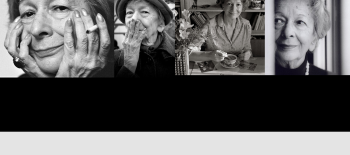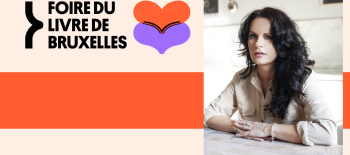100th anniversary of the death of L. ZAMENHOF, the creator of the Esperanto
Grateful thanks go to the Białystok Zamenhof Centre (espeically to the Centre’s Director, Grażyna Dworakowska) who was kind enough to provide us with photographs.
Ludwik Zamenhof.
Ludwik Zamenhof. Idealism encapsulated in a universal language
by Agnieszka KAJDANOWSKA
(translation: Leah MAITLAND)
On 14 April 2017, we will mark the centenary of the death of Ludwik ZAMENHOF, the creator of Esperanto. Zamenhof was a great idealist whose only hope was that the language which he had invented might one day unite the whole of humanity. Ludwik, or, to be more precise, Lejzer Łazarz Zamenhof, was born on 15 December 1859 into a Jewish family in Białystok. The family lived at number 6 Zielona Street, in one of the poorest areas of town. Ludwik’s mother, Rozalia Sofer, was a deeply religious woman, whilst his father, Marek, who taught foreign languages, possessed several of the traits one could find amongst liberals and free thinkers in the XIXth century. The differing views held by his parents played a very important role in the intellectual development of their eldest son. Białystok, Zamenhof’s birthplace, also went some way towards shaping his world view. Some time later, in a letter addressed to Nikolaj Afrikanovič, a Russian speaker of Esperanto, he wrote the following about his city: “The city where I was born determined my entire future. […] I was brought up to be an idealist. I was taught that all men are brothers. But in every inner courtyard, with every step I took, I sensed that these were not brothers whom I saw, but Russians, Poles, Germans, Jews and so on. This backwards thinking made such an impression on my child soul […]. Back then, it seemed to me that adults could do as they pleased, and I kept on repeating to myself that I alone, once I was older, could change that.” In 1857, Białystok had more than 14,000 inhabitants, the overwhelming majority of whom were Jewish (69%), with Catholics making up 22% of the population, followed by Protestants (5%). Those belonging to the Orthodox faith were smaller in number, with numbers estimated at a little under 4%. The city was dominated by the town hall tower, situated in the centre of the market place, which played a chiefly commercial role. Here was where all those residing in the town and the surrounding area came together. Far and wide, one could hear languages intermingling: Yiddish, Polish, German and Russian. For Ludwik, the city bore a striking resemblance to the tower of Babel. The people milling around outside the town hall sometimes had difficulty understanding one another and spoke different languages, which reminded him of the construction of the biblical tower, when God mixed up all languages in order to punish humans for their arrogance. At the age of 10, Ludwik described his contemporaries in a work entitled The Tower of Babel or the Białystok tragedy in five acts. When, in 1873, he moved to Warsaw with his parents and a large number of family members, he took with him this tableau, as well as the idea buzzing around inside him of creating an international language. The Zamenhof family had left in order to pursue a more prosperous way of life. Ludwik went on to attend the Middle School for Boys no II, in the philology section, having begun his education at the mainstream middle school in Białystok. In Warsaw, he perfected his knowledge of languages such as Polish, German and Russian. He also knew Yiddish, French, Hebrew and Latin; at the Warsaw College, he began learning English. Most pupils in his entourage thought it unreasonable and impossible to create a language artificially, but a tight circle of friends paid ever closer attention to his efforts and the results of his labours. In all likelihood, he finished his work on the dictionary and grammar of his new language in 1878, one year before receiving his baccalaureate. In June 1879, Ludwik began studying Medicine in Moscow, in accordance with his father’s wishes. Nonetheless, following the assassination of Emperor Alexander II in Moscow, he left the city due to the resurgence of antisemitism and the increasing threat of the pogrom. The story goes (though this has not been entirely verified) that after his return to Warsaw, he could no longer find his childhood manuscripts, notably the first draft of the dictionary and grammar which he had composed. The reason? His father had destroyed them. Unlike Ludwik’s mother, brothers and sisters, his father had been against his son’s passion. He thought it a waste of precious time which his firstborn son ought to devote to medicine. Fortunately for the future international language, Ludwik refused to give up, and, armed with what he managed to salvage and the benefit of his own experience and that of other creators of international languages, he resumed and improved upon the two works he had been developing in the years 1882-1887.
On 18 January 1885, Ludwik took the Hippocratic Oath. On his father’s advice, he decided to specialise in ophthalmology, which was meant to ensure a swift rise up the professional ladder. The young Zamenhof did not engross himself particularly in his internship in a Viennese ophthalmologist’s clinic, spending all his free time perfecting the language he had invented. Medicine had never been a vocation for Ludwik, and he was destined never to become an accomplished doctor. Back in Warsaw, and having sacrificed his own ambitions to comply with the decisions of his family, he accepted a post in a hospital. Behind this decision lurked another goal: he wished to earn money in order to publish a text book for his new language. The manuscript was signed by Dr Esperanto, a pseudonym which, in his language, meant ‘the doctor who has hope’. Hope in the realisation of his dreams and hope that humans might be united thanks to him. It is from this pseudonym that the later name for the language is derived.
1887 was a happy year for two reasons: Ludwik married Klara Silbernik, the daughter of a rich merchant from Kowno, and, thanks to the financial support of his father-in-law, he published his book. On 14 July, The Russian version of his manual had been printed, and one week later the same manual came out in Polish. The full title is Język międzynarodowy. Przedmowa i podręcznik kompletny (The International Language. Preface and Complete Manual). In Esperanto, it bears the title Lingvo internacia. Antaǔparol kaj plena lernolibro. Alongside his work on the international language, Ludwik had to work in order to put food on the table for his family, all the more so given that, in 1888, his first child, Adam, was born. Successive moves, brought about due to a need to look for work, took the family first to Kherson, in the Russian hinterland, and then to Grodno in 1893, but uprooting the family did not pay off. In Grodno, the Zamenhof family spent four years living close to the poverty line, only kept afloat by systematic allowances provided by Ludwik’s father-in-law, as Ludwik himself observed. It was with the former’s help that the Zamenhof family ended up returning to Warsaw. Aleksander Silbernik bought two rooms for his son-in-law, one of which was to be used as living quarters, the other as a private ophthalmologist’s cabinet.
Once Ludwik’s life was back on an even keel, he was able to devote himself entirely to his life’s passion. More or less from the very first days which followed the publication of the first two versions of his manual, the circle of future propagators of Esperanto, united in their admiration for its creator, began to form. The first striking success was achieved in 1905. In Boulogne-Sur-Mer, in France, the first World Congress for Esperanto took place. 688 speakers of Esperanto attended. Along the way, Zamenhof was awarded the Legion of Honour in Paris and the Eiffel Tower was lit up in his honour. During the congress, the creator of Esperanto renounced the copyright to his own work. Later congresses strengthened and propagated Esperanto. In 1907, 756 Esperanto organisations were up and running across the world, of which 123 were located outside of Europe. The following year, on the occasion of the IVth World Congress in Dresden, the number of Esperanto organisations reached 1266, and no fewer than 1393 Esperanto speakers took part. In 1908 the International Union of Esperantists was established.
For Ludwik Zamenhof, Esperanto was a way to achieve his dream of seeing friendship unite citizens across the globe. He had originally called his idea Hilelism. His source of inspiration could be found in the works of a Jewish thinker, Hillel Hazaken, who lived in the first century BC. Zamenhof’s chief guiding principle was the coming together of nations, but also, by corollary, the changes which needed to take place in the spheres of religion and social mores. His way of seeing things met with considerable hostility, both on the part of Jews, who were meant to play a key role in the process, and the Esperanto speakers themselves. Most people thought it a private matter for Ludwik Zamenhof. By now, Dr Esperanto was calling his idea homaranismo, from the Esperanto word ‘homaro’, humanity, which was meant to highlight the fact that it was addressed to humanity as a whole. Zamenhof was putting forward a universal religion and set of values. The founding principle of this set of values was a love of people. However, both Zamenhof’s opponents and his friends were critical of his mysticism. The spread of homaranismo came to an end after the schism between the proponents of the international language and the creation of the project for a new language, ido. In 1912, during the World Esperanto Congress in Krakow, Zamenhof publicly resigned from his official functions in the Esperanto movement. When the First World War broke out, Zamenhof had only just turned 55, but was already a tired man, faced with the near-impossible task of accomplishing his task. For this great idealist, the war was a terrible experience. Ludwik Zamenhof did not live to see the end of the war, as he died on 14 April 1917. He was buried in Warsaw, in the Jewish cemetery in Okopowa Street.
Neither Esperanto nor Zamenhof’s vision of society changed the world, but they created the Esperanto movement, to which many people belong all across the world. Estimates as to the number of people in the world who can speak Esperanto vary wildly, from tens of thousands to several million. In the preface to his manual, which was published in 1887, Ludwik Zamenhof recognised what he saw as the importance for “this language to be incredibly easy, so that studying it be a game”. Esperanto combines elements of many languages used in the whole of Europe. 75% of its vocabulary is derived from Romance languages, 10% from Germanic languages (including Yiddish), 13% from Greek and 1% from Slav languages. The remaining one per cent is made up of elements which are not derived from any language and these are words dreamt up by Zamenhof himself.
Ludwik Zamenhof. Idealism encapsulated in a universal language



